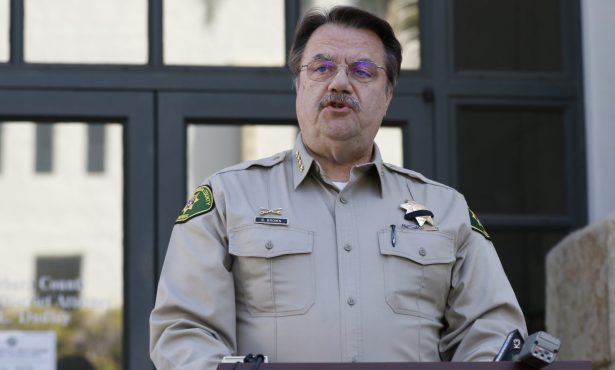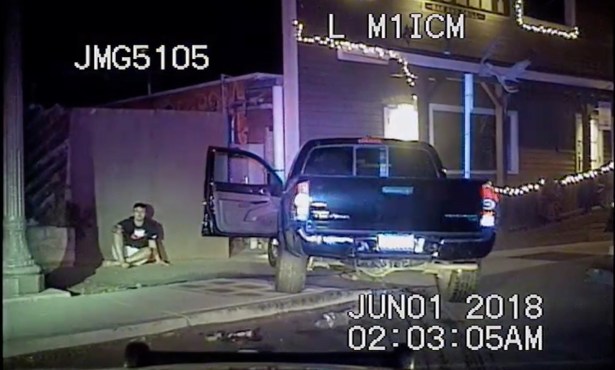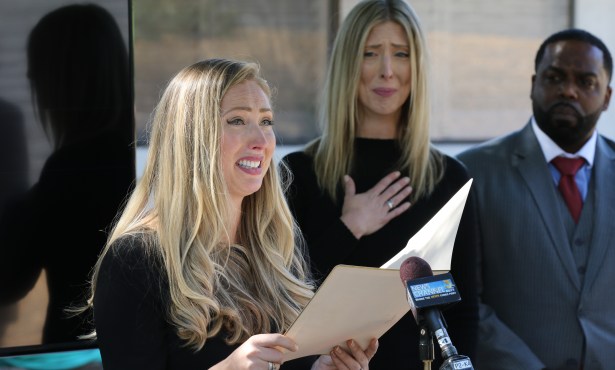Santa Barbara Sheriff’s Files: Scream Therapy, Then a Shooting
Kerry Flood Was Killed in the Midst of a Mental Breakdown

In June, following the death of George Floyd and amid renewed scrutiny over how and when law enforcement officers use physical force against civilians, the Independent filed a California Public Records Act request with the Santa Barbara County Sheriff’s Office for information on all of its serious use-of-force incidents dating back to 2010. The Sheriff’s Office is in the process of releasing the records on a rolling basis, and these reports will be published as the information is made available.
The week before Kerry Flood was shot and killed by Santa Barbara Sheriff’s deputies on April 23, 2011, he’d cried a lot. He was out of work. His girlfriend left him. Both his father and his dog had recently died.
Flood, a former employee of the Bureau of Land Management for 14 years and “always a strong advocate for the environment,” his obituary says, was living in San Juan Capistrano and visiting his mother, Barbara Flood, for Easter at her home in a Santa Maria mobile home park. At around noon that day, according to Barbara’s interview with detectives, part of 511 pages of investigative notes on the incident, Kerry decided to take a dip in the park’s hot tub.
Forty-five minutes later, a woman called 9-1-1 to report Kerry was “yelling at the top of his lungs” at the pool complex and frightening nearby children. Kerry, wearing only a towel, would shout, point in the air, and then gesture and scream at an empty chair next to him, the caller said. Another resident had confronted Kerry, who said he was doing “scream therapy” and apologized for causing a disturbance.
Get the top stories in your inbox by signing up for our daily newsletter, Indy Today.
By the time Sergeant Rob Wilkinson and Senior Deputy Marc Hammill responded to the mobile home park, looking for a white man in his fifties or sixties with a shaved head and stocky build, Kerry had returned to his mother’s home. Wilkinson and Hammill spoke to a group of people standing up the street who identified Kerry as the person they were looking for and pointed them toward the beige unit with pink trim. They said Kerry was “normally a nice guy” but that there was “something wrong” that day.
Wilkinson and Hammill knocked and received no answer. The front door was open but blocked by a heavily meshed screen door that prevented them from seeing inside. They opened the screen and remained on the front stoop as they continued announcing themselves and asking if anyone was home, Hammill said in his interview with investigators. “[Hammill] stated that their primary purpose for making contact with the residence was to check the welfare of the occupants due to the nature of the 911 call.”
Barbara Flood eventually appeared, and Wilkinson asked her if Kerry was around. She hesitated and had a “bewildered” look on her face, Wilkinson said. She told him Kerry was at an Alcoholics Anonymous meeting. Wilkinson believed she was “nervous and hiding something,” he later told detectives. He assured her they were there just to see if she and Kerry were okay. Just then, Wilkinson saw Kerry’s reflection flash across a glass hutch inside the home. He ordered Hammill to make his way to the back door.
As Hammill circled around, Kerry appeared in the hallway wearing a robe and holding a 12″ x 12″ concrete paver. “They can’t fucking come in here without a warrant!” he yelled. Wilkinson took out his Taser, stepped inside, and called for Hammill. Kerry shouted at Wilkinson, “Get the fuck out of here!” as Barbara pleaded with Wilkinson to go outside so she could try and calm Kerry down.
Kerry’s ex-girlfriend would tell investigators that he harbored deep resentment toward law enforcement after he was allegedly “beat up” several years earlier in San Bernardino by California Highway Patrol officers. His other police contacts included two DUIs, an arrest for public intoxication, and a speeding ticket he received the morning he died.
“The family is not interested in money, but we are interested in seeing some type of justice, something that can make this right so it doesn’t happen again.”
Donna Sousy
Hearing the commotion, Hammill entered through the back door and saw Kerry advancing toward Wilkinson with the paver raised above his head. Hammill shot his Taser at Kerry’s back, but the barbs stuck in his robe and had no effect. Kerry wheeled around and slammed the paver across Hammill’s forehead and forearm as he tried to block the blow. An incredibly violent and desperate brawl between the three ensued. “Hammill described Flood as the most actively combative individual he has encountered in his 14 years as a law enforcement officer,” the report states. Multiple closed-fist punches were exchanged. Kerry ripped Wilkinson’s badge off his uniform.
Wilkinson and Hammill disengaged from the fight to regroup and arm themselves with their batons. But before they could, Kerry jumped up “as if he was spring-loaded” and grabbed a wooden chair. He held it over his right shoulder and rushed toward Hammill, who, partially blinded by the blood streaming from his head wound, drew his gun and fired four shots in quick succession. Two hit Kerry, one piercing his heart and spinal cord. One narrowly missed striking his mother. Kerry was pronounced dead by responding paramedics. Hammill was treated at the hospital and released later that day.
The District Attorney’s office said the shooting was justified, explaining both the paver and chair were capable of inflicting great bodily injury or death and the deputies feared for their lives. “I find that Senior Deputy Marc Hammill and Sergeant Rob Wilkinson used reasonable force based on the circumstances they were facing at that moment,” said District Attorney Joyce Dudley in her report.
The Flood family, however, was critical of how the deadly confrontation unfolded. They suggested Wilkinson and Hammill should have never entered Barbara’s home, and that by doing so they exacerbated an already volatile situation. If Kerry truly posed a threat to his mother, the family said, the two should have removed her from the home right away instead of physically engaging with Kerry. “From the point they tased him, it just escalated out of control,” Kerry’s brother, Todd, told reporters with the Santa Maria Times a week after the shooting. “There was no warning to get down, to do whatever. There was no warning before they confronted him.”
A family spokesperson told a San Juan Capistrano newspaper that Kerry’s killing was “senseless.” Donna Sousy said that when Wilkinson and Hammill arrived at Barbara’s home, “No real crime had been committed. [Barbara] had asked them to wait outside, but they took it upon themselves to enter the home, one from the front, and one from the back. They pretty much had Kerry cornered….
“I think perhaps there is a training issue here,” Sousy went on. “The family is not interested in money, but we are interested in seeing some type of justice, something that can make this right so it doesn’t happen again.”
A toxicology report found caffeine, nicotine, and marijuana in Kerry’s system. Records show he’d been diagnosed with schizophrenia when he was 19 years old and was discharged from the U.S. Navy. He took medication but stopped because it made him feel like a “zombie.” He then started drinking heavily but had quit 15 years before his death. Religion became a big part of his life. Kerry’s mother said the day he was shot, he was acting normally then “just snapped.”
Every day, the staff of the Santa Barbara Independent works hard to sort out truth from rumor and keep you informed of what’s happening across the entire Santa Barbara community. Now there’s a way to directly enable these efforts. Support the Independent by making a direct contribution or with a subscription to Indy+.




You must be logged in to post a comment.